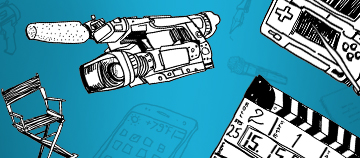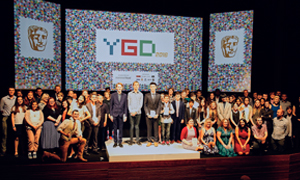What does it take to build a successful app? Read these top tips garnered from a panel of experts during BAFTA's 'What's App' event in March 2012.
|
The expert panel consisted of Paul Bennun (Director at Somethin’ Else), Tom Bonnick (Digital Project and Marketing Manager at Nosy Crow) and Peter Sleeman (Director at P2 Games) and was chaired by Guardian journalist Stuart Dredge.
The group discussed their experiences of developing a commercially successful apps on iOS, looking predominantly at Children's media and games. Below is a synopsis of the event based on key app industry trends as identified by Stuart Durges in his opening presentation.
|
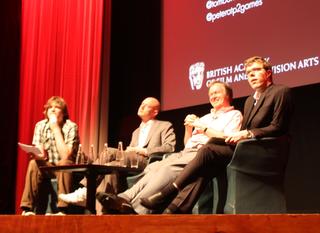
Left to right: Stuart Dredge, Paul Bennun, Peter Sleeman & Tom Bonnick
|
1) Big Brands Make Apps But Apps Also Make Big Brands
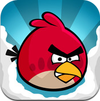 Clickgamer.comThere’s now an app based on the majority of well known children's brands & favorite characters but the app market has also enabled the establishment of new brands and familiar faces. Examples of this can be seen in Angry Birds, Talking Tom Cat and Swampy the Alligator who first featured in Disney’s Where’s My Water app. The characters from angry birds have been re-imagined for all sorts of commercial products from soft toys to a ballroom gown. Clickgamer.comThere’s now an app based on the majority of well known children's brands & favorite characters but the app market has also enabled the establishment of new brands and familiar faces. Examples of this can be seen in Angry Birds, Talking Tom Cat and Swampy the Alligator who first featured in Disney’s Where’s My Water app. The characters from angry birds have been re-imagined for all sorts of commercial products from soft toys to a ballroom gown.
|
|
2) Apps as a Cultural Melting Pot
 Moonbot StudiosCreative apps have lead to a blurring of the boundaries between books, games, animation, short film and interactivity. A good example of this can be seen in Moonbot Studios’ Oscar winning app ‘The Fantastic Flying Books of Morris Lessmore’ which pulls together moving image art forms to create a dynamic, interactive storybook. Moonbot StudiosCreative apps have lead to a blurring of the boundaries between books, games, animation, short film and interactivity. A good example of this can be seen in Moonbot Studios’ Oscar winning app ‘The Fantastic Flying Books of Morris Lessmore’ which pulls together moving image art forms to create a dynamic, interactive storybook.
Most book apps incorporate animation and many children’s education apps are drawing on games technology as creatives in all fields use apps as a platform for expression. Paul Bennun explained that game design techniques underpin the basis of many of the successful apps he has developed for Somethin’ Else.
|
|
3) Creativity Not Just Consumption
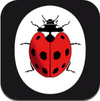 Penguin BooksSuccessful apps for children are not simply consumed, they are about doing and creating. Good examples are the Ladybird Classic Me books in which the reader can record their own sound effects and the Harper Collins Big Cat apps which allow the user to create their own story with the characters and words. Penguin BooksSuccessful apps for children are not simply consumed, they are about doing and creating. Good examples are the Ladybird Classic Me books in which the reader can record their own sound effects and the Harper Collins Big Cat apps which allow the user to create their own story with the characters and words. 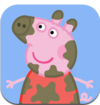 P2 Games LtdBoth are good examples of how apps can evoke active engagement from kids. P2 Games LtdBoth are good examples of how apps can evoke active engagement from kids.
Peter Sleeman attributed part of the success of P2 Games' Peppa Pig app to their decision to make the games repeatable but not repetitive. It is an interactive experience which children will happily engage with time and time again.
|
|
4) Merging Digital and Physical Place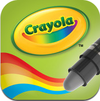 Griffin Technology Griffin Technology
Apps are playing a major part in the trend of blending physical and virtual play. Disney AppMATes for example combine a physical toy car with a virtual world within the iPad & Crayola’s Colour Studio app works by using a giant hand held crayon to scribble on the iPad screen.
|
|
5) Stories for Special Needs
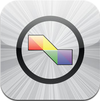 Touch AutismIntuitive technology can undoubtedly make learning mote accessible and there is a breed of apps emerging for children with learning difficulties or disabilities which use storytelling as therapy, to build confidence. Touch Autism for example offer a variety of apps designed to aid special needs learning. Their apps suit visual learners allowing for non-verbal and non-written interaction. Touch AutismIntuitive technology can undoubtedly make learning mote accessible and there is a breed of apps emerging for children with learning difficulties or disabilities which use storytelling as therapy, to build confidence. Touch Autism for example offer a variety of apps designed to aid special needs learning. Their apps suit visual learners allowing for non-verbal and non-written interaction.
 Somethin' ElsePapa Sangre, an audio only game developed by Paul Bennun’s team at Somethin’ Else has been hailed as one of the top games for the visually impaired. Whilst they didn't set out with the specific aim to design a game for the blind, Somethin' Else also worked with the RNIB and a team of visually impaired testers and discovered that visually impaired players picked up the game far faster than sighted players. Somethin' ElsePapa Sangre, an audio only game developed by Paul Bennun’s team at Somethin’ Else has been hailed as one of the top games for the visually impaired. Whilst they didn't set out with the specific aim to design a game for the blind, Somethin' Else also worked with the RNIB and a team of visually impaired testers and discovered that visually impaired players picked up the game far faster than sighted players.
|
|
6) Discovery Difficulties
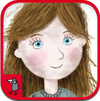 Nosy CrowThere’s big demand for great apps but brilliant apps are constantly being developed in high volumes which makes the challenge of discoverability ever-more-difficult. The marketplace is polluted with the sheer volume of poor quality apps and rubbish. The panel were united on the fact that personal recommendation and brand building is the best way to overcome this. Nosy CrowThere’s big demand for great apps but brilliant apps are constantly being developed in high volumes which makes the challenge of discoverability ever-more-difficult. The marketplace is polluted with the sheer volume of poor quality apps and rubbish. The panel were united on the fact that personal recommendation and brand building is the best way to overcome this.
Tom Bonnick stressed that just becuase an app is not sold in a physical space it is still vital to take marketing seriously. Social media, SEO and analytics are all essential practices to make your product findable.
|
|
7) Its an Apple World
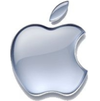 Whilst we’re starting to see more and more android apps on offer, the market place is still very much dominated by the iPhone, iPad & iPod touch. Developers are following the trend in Apple's popularity and recognising that this is where the strongest audience lies and where the greater profits can be made. Whilst we’re starting to see more and more android apps on offer, the market place is still very much dominated by the iPhone, iPad & iPod touch. Developers are following the trend in Apple's popularity and recognising that this is where the strongest audience lies and where the greater profits can be made.
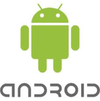 Paul Bennun explained that due to the fragmentation of APIs across android devices it is virtually impossible to target the android audience as a whole. Apple on the other hand pushes software updates out to all of its devices. Creating an app on iOS therefore will be accessible to a far larger audience making the financial incententive to develop for iOS much greater. Paul Bennun explained that due to the fragmentation of APIs across android devices it is virtually impossible to target the android audience as a whole. Apple on the other hand pushes software updates out to all of its devices. Creating an app on iOS therefore will be accessible to a far larger audience making the financial incententive to develop for iOS much greater.
|
|
!Listen to the full Developing Successful Apps discussion on BAFTA Guru
 ~BAFTA Guru is the Academy's online resource
~BAFTA Guru is the Academy's online resource
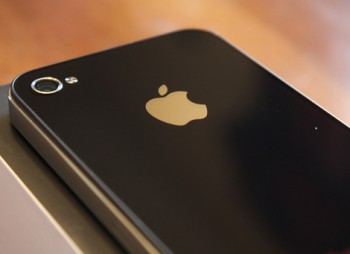 Image by SuperStrikerTwo on Flikr
Image by SuperStrikerTwo on Flikr 

 ~BAFTA Guru is the Academy's online resource
~BAFTA Guru is the Academy's online resource
